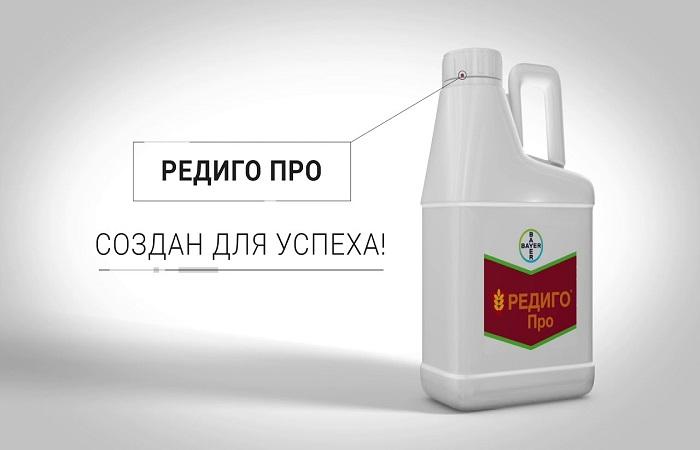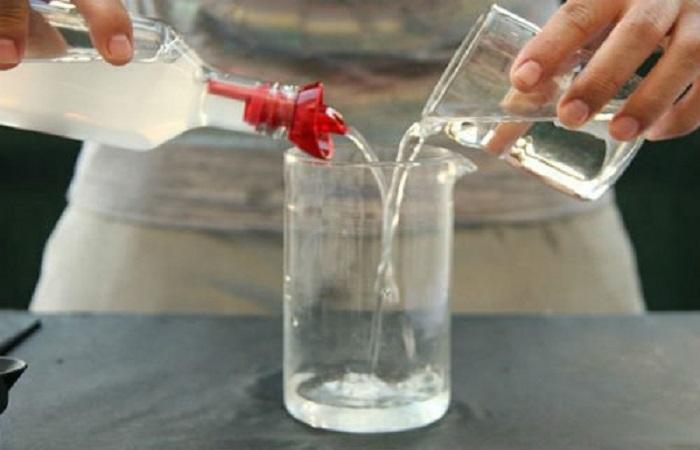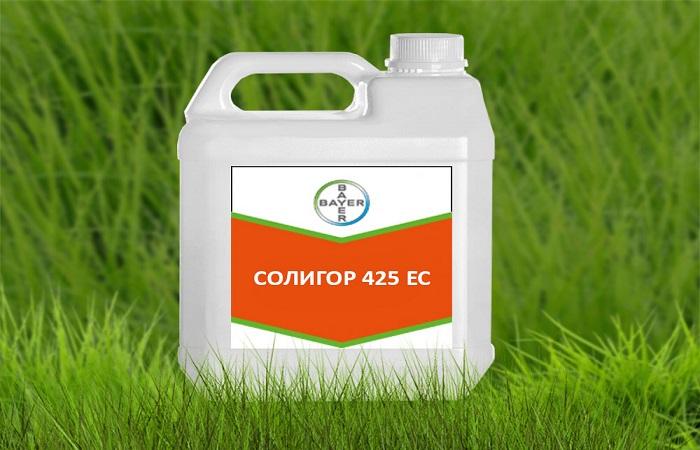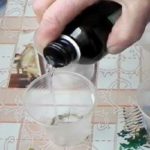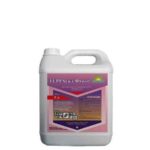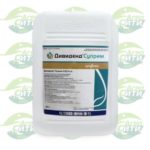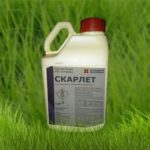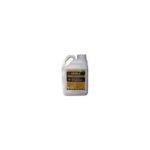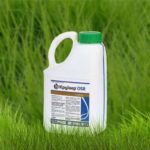Seed dressings are used to protect them from infection by fungi, which leads to the death of some seedlings. Let's consider the composition, mechanism of action, purpose of the Redigo Pro disinfectant, how to use it according to the instructions, how to work according to safety precautions. What drugs can be combined with, what can be replaced with, under what conditions should it be stored.
Composition and release form of the disinfectant
The well-known agricultural company Bayer produces the fungicide in the form of a suspension concentrate in 5-liter canisters.The formula combines 2 active ingredients from the triazole class: prothioconazole in an amount of 150 g per 1 liter and tebuconazole in an amount of 20 g per 1 liter. "Redigo Pro" is a systemic pesticide with curative, protective and immunizing effects.
Operating principle and scope of use
When triazoles enter pathogens, they stop the formation of sterols, thereby disrupting the integrity of their cells. The product penetrates into the seeds when they germinate - into the roots, and gradually spreads throughout the plant, protecting it from possible infection. Protection continues until the tube exit stage.
The solution colors the seeds evenly, which helps control the quality of processing. The fungicide is used on the seeds of barley, rye, triticale, wheat, peas, millet, oats and flax (long-lasting and oilseed).
Seed treatment is carried out against varieties of smut, root rot, mold, spotting, mottling, fusarium, and anthracnose.
Instructions for use of the drug "Redigo Pro"
For all crops treated with fungicide, the application rate is the same - 0.45-0.55 liters per ton. This volume of seeds requires 10 liters of solution. The treatment is done before sowing. After spraying, the seeds are dried. The substance adheres well to the surface of the seeds, does not crumble, and no additional processing is required.
Precautionary measures
The disinfectant belongs to class 3 in terms of toxicity to the human body. The fungicide is not dangerous for bees, soil worms and microorganisms, birds, and is toxic to fish, so sowing seeds treated with it in areas located near water bodies is prohibited. Its active ingredients do not have a negative effect on warm-blooded animals.They quickly decompose in the soil, half-disintegrating in 1.3-2.8 days.
When working with Redigo Pro, be sure to wear thick clothing with long sleeves and gloves to protect the skin from exposure to the fungicide solution. You also need to cover your nose and mouth with a respirator and your eyes with glasses. These measures will help significantly reduce the likelihood of skin poisoning or irritation.
Compatibility with other substances
"Redigo Pro" can be combined with other pesticides, excluding drugs with a pronounced acidic or alkaline reaction. Prepare the components of the common solution separately and then mix them in one container.
But before mixing, you should conduct a small test for the chemical compatibility of the substances: dilute the solutions of both drugs separately and combine them in a common small container. If no change in chemical or physical properties is observed, they can be used simultaneously.
Storage conditions and periods
"Redigo Pro" disinfectant should be stored at a temperature from 0 to + 30 °C. Keep the concentrate only in plastic production cans. Other mandatory storage conditions: a dark and dry room, because the drug should not be exposed to moisture or sunlight.
You can add other agricultural products, pesticides, and fertilizers together with the disinfectant. It is forbidden to have feed, food, medicine or household products in its immediate vicinity. The warehouse must be securely closed so that animals and children cannot enter it.
Are there any analogues
For prothioconazole, analogues of the disinfectant are: “Prozaro Quantum”, “Atlant”, “Redigo M”, “Propulse”, “Fandango”, “Baritone”, “Soligor”, “Quartet”, “Prozaro”, “Input”, “Lamador” ", "Emesto Silver", "Baritone Super", "Scenic Combi", "Lamador Pro".
For tebuconazole, the disinfectant has more analogues: “Bunker”, “Vitalon”, “Barrier Color”, “Armor Quadra”, “Vento”, “Anker Trio”, “Zantara”, “Impact Super”, “Klad”, “Konkur” , “Alfa-Protravitel”, “Vial TrasT”, “Concord”, “Maxim Forte”, “Luna Experience”, “Raxil Ultra”, “Grandsil”, “Zamir”, “Raxon”, “Rubin”, “Stinger” . All preparations are intended for use in agriculture. Basically, they process grain crops.
Redigo Pro is a reliable seed protectant for major grain crops. The fungicide protects seeds and seedlings from major fungal diseases. The etched material actively germinates, the drug protects it from infection until the stage of exiting the tube. Since the seeds have already been treated with a fungicide, there is no need to spray the plants in the fields, therefore significant savings are made on the purchase of pesticides. Thus, the cost of growing grains decreases and the yield increases. The use of a seed protectant for seed treatment is considered economically beneficial not only for this reason, but also because its application rate and consumption are small.

